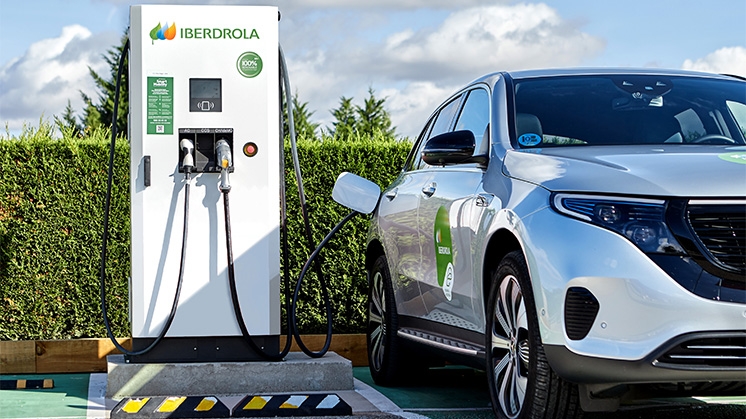The Electric mobility market is on the cusp of a major revolution. Projected to be valued at USD 452.3 billion in 2024, the electric mobility market is touted to witness exponential growth and reach a staggering value of USD 4,651.9 billion by the year 2035, growing at a compound annual growth rate (CAGR) of 23.6% from 2025 to 2035. At the heart of the global transition toward sustainable, energy-efficient, and carbon-conscious transportation systems is electric mobility.
The electric mobility market is a very promising one in the face of challenges by climate change and air pollution. This is a fast-evolving sector including electric vehicles, electric buses, scooters, and the vital charging infrastructure that supports them. With incentives from the government toward cleaner energy alternatives, coupled with developments in battery technology, electric mobility is emerging to be one of the major forces in the transformation to greener transportation.

What is Electric Mobility?
Electric mobility refers to all modes of transportation powered by electric energy, including electric cars, buses, trucks, two-wheelers, and the systems that make them operational—especially battery technology and charging infrastructure. It's not just about replacing conventional gasoline-powered vehicles; it's about creating an integrated, sustainable transportation ecosystem that reduces our carbon footprint and reliance on fossil fuels.
Key Drivers of Growth in the Electric Mobility Market
Fleet Electrification: A Corporate Focus on Sustainability
A growing number of companies, including corporate fleets and delivery services, are turning to EVs to cut operational costs and hit sustainability targets. According to the U.S. Department of Energy, making the switch to electric delivery vehicles can save up to 70% in fuel costs, making EVs not only environmentally friendly but also quite cost-effective. As sustainability becomes one of the main business goals, companies are now switching to electric fleets in order to lower both their operational costs and greenhouse gas emissions.
- Advancements in Battery Technology
The technology of batteries is a game-changer for electric mobility. Breakthroughs in, for instance, solid-state batteries, improvements in lithium-ion technology, and innovations in materials contribute to reduced manufacturing costs while increasing energy density. This will again lead to longer battery lifespans, shorter charging times, and lower costs for customers. Continual improvement in battery technology makes electric vehicles increasingly affordable, with more driving range, and speeds up the transition to the mass market.
- Charging Infrastructure Challenges
Despite the rapid growth of electric mobility, the limited availability of charging stations remains a key barrier. Consumers continue to be concerned about “range anxiety” – the fear of running out of charge on long trips, especially in rural or underserved areas. The slow expansion of charging infrastructure, coupled with inconsistent charging standards, further limits EV adoption. While investments in charging stations are growing, a coordinated global push for universal charging infrastructure is critical to meet the demands of an expanding EV market.
- Battery Recycling and Sustainability
With the rise of electric vehicles, the requirement for sustainable recycling of batteries becomes more crucial every day. This can be met by repurposing EV batteries for stationary energy storage, reducing the raw material demand in the production of such batteries using metals like lithium, cobalt, and nickel. These critical metals, when recycled from spent batteries, decrease environmental degradation and create a circular economy around the life span of batteries, further developing more sustainable and resource-efficient electric mobility markets with rising recycling technologies in the near future.
- Vehicle-to-Grid (V2G) Technology
Another exciting development in electric mobility is Vehicle-to-Grid, or V2G, technology. It allows EVs to return excess energy to the grid, supporting grid stability and improving energy efficiency. V2G helps balance supply and demand, particularly during peak hours, and therefore plays a considerable role in supporting renewable energy sources such as solar and wind. With the maturity of V2G technology, electric vehicles can become not only transportation solutions but also integral components of a smarter, more sustainable energy grid.
Trends and Market Segments
The electric mobility market is broad and diversified, covering a range of products, battery types, and applications.
Product Type: The market is segmented into electric cars, two-wheelers, buses, trucks, and others. Among these, electric cars dominate, with growing consumer demand fueled by government incentives, environmental concerns, and technological advancements in battery efficiency and affordability.
Battery Types: Lithium-ion (Li-ion) batteries are the most common in electric cars due to their high energy density and long life. However, solid-state batteries, which would offer even higher performance and safety, can be expected to become more widespread in the next few years.
End-User Segmentation: The market is further segmented by end-user, including individual consumers and commercial applications. A very important trend is fleet electrification by businesses, mainly in logistics and public transport, as it offers substantial cost savings and sustainability benefits.
Regional Insights
Currently, Europe is the largest market for electric mobility, driven by strong government policies, environmental regulations, and incentives toward EV adoption. Countries such as Norway, the Netherlands, and Germany have been investing heavily in EV infrastructure to contribute to the leadership of the region in electric mobility.
The Asia-Pacific region, and specifically China, represent the fastest-growing market for electric vehicles. The Chinese government has invested heavily in EV adoption through subsidies, regulatory support, and infrastructure development. India, Japan, and South Korea are also growing their electric mobility markets, driven by concerns over air pollution and dependence on fossil fuels.
Top Companies in Electric Mobility
The electric mobility market is very competitive, with the main players being Tesla, BYD, Volkswagen, Nissan, BMW, and General Motors. These companies are continuously expanding their electric vehicle portfolios, advancing battery technology, and building charging infrastructure.
Tesla leads the pack with its Model 3 and Model Y, though Volkswagen is really starting to show its hand with the ID series. BYD and Nio, based in China, are gaining in the affordable EV space. Meanwhile, companies like BMW and Hyundai are focused on both electric and autonomous vehicle technology.
The Road Ahead
The future of electric mobility is bright. With increasing investments in technology and infrastructure, the industry is looking at exponential growth. Challenges in charging infrastructure, battery recycling, and cost affordability are being met with innovation, making electric mobility one of the key components leading the global push toward a sustainable future.





